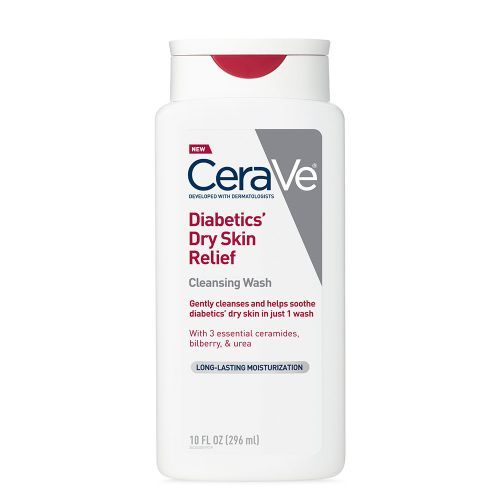A lot of people will see results with intermittent fasting on its own. They do a good job of eating during certain windows, and when they eat, they make sure that their food is full of nutrition. But if you would like to enhance your results and burn extra fat, then it is important to add some workouts to your routine. This post will take a look at the steps that you should take to properly train and exercise while on the intermittent fast.
In fact, a study recently conducted by a Sport and Health Sciences institute in Sweden shows that reducing the overall number of carbs in your diet allows your body to burn calories more effectively and increase muscle growth potential. In this study, ten elite level cyclists went through an hour of interval training, going at about 64 percent of their maximal aerobic capacity.
They either had low or normal muscle glycogen levels that were achieved before diet or exercise intervention. Ten muscle biopsies were taken before exercise, as well as three hours after they were done with exercising. The results showed that exercising while in a glycogen depleted state was able to increase mitochondrial biogenesis.
This is the process by which new mitochondria can form inside the cells. The authors of the study believe that exercising on a low glycogen level diet may be beneficial for improving muscle oxidative capacity.
Part of what makes working out when you are currently in a fasted state effective is that the body has some mechanisms that help to preserve and protect the muscles from wasting itself. So, if you are low on fuel for a workout, which you naturally will be when you are on an intermittent fast, your body will start to break down some of the other tissues, but not the active muscle that you’re using.
Exercising while preserving your muscles
Many experts agree that about 80% of the health benefits that you gain from a healthy lifestyle comes from your diet. The rest will come from exercise. This means that you need to focus on eating the right foods if you want to actually lose weight. However, it is important to realize that both exercise and eating well are necessary.
Researchers studied the data from 11 participants who were on the show “The Biggest Loser.” The total body fat, total energy expenditure, and the resting metabolic rate of the participants were measured three times. These were measured at the start of the program, after six weeks, and then at 30 weeks. Using a model of the human metabolism, the researchers were able to calculate the impact of diet and exercise changes in resulting in weight loss to see how each one contributed to this goal.
Researchers found that the diet alone was responsible for most of the weight loss. However, only about 65 percent of that weight loss was from body fat. The rest of the reduction in body weight was from lean muscle mass. Exercise alone resulted in fat loss only, along with a slight increase in lean muscle mass.
According to the National Institutes of Health, “The simulations also suggest that the participants could sustain their weight loss and avoid weight regain by adopting more moderate lifestyle changes – like 20 minutes of vigorous daily exercise and 20 percent calorie restriction – than those demonstrated on the television program.”
Exercising and fasting together
If you are trying to get an effective exercise program that will add some highintensity training as well as intermittent fasting, there are a few components that will need to come together. When you are doing this, if you feel that you do not have enough energy to keep going with the workouts, then it is time to make a change. Usually reducing how many hours you are fasting for will make a difference. Intermittent fasting is meant to make you feel great, and if it doesn’t, then it is time to change up your strategy.
There are two main points that you need to keep in mind when working out while on the intermittent fast. The first one is about the timing of your meals. Intermittent fasting is not all about extreme calorie restrictions. You are not meant to starve yourself to achieve great results. Rather, it is simply a matter of timing your meals properly so that you do not eat during most of the day. You can eat during a small window, perhaps during the evening or later part of the day. So, if you limit your eating to between 4 and 7 in the evening, you will be fasting for 21 hours.
It is ideal for most people to go between 12 to 18 hours of fasting. Most people prefer to fast for 16 hours because this is the easiest to fit into their busy schedules. You can find out what works the best for your needs while ensuring that you will get all of the benefits. If you are having trouble completely abstaining from food during the day, then you want to limit your eating to a small serving of light, low-glycemic foods.
These include healthy options like poached eggs, whey protein, vegetables, and fruits every four to six hours. Whatever times you decide to eat, it’s best to avoid food at least three hours before you go to bed. Doing this will help you minimize the oxidative damage in your system and can really make intermittent fasting easier to accomplish.
In addition, you should break your fasts with a recovery meal on the days that you work out. On the days that you have to exercise while fasting, you need to consume a recovery meal about 30 minutes after you’re done working out.
Adding fast-assimilating whey protein to your meal can help with muscle recovery.
After you have had that meal, it’s a good idea to fast again until you eat your main meal that night. It’s important to eat an appropriate recovery meal after each workout session. This will ensure that your body gets the energy that it needs, and that muscle or brain damage will not occur. Do not skip this meal and make sure that you are getting it within 30 minutes after the workout.
If you think that fasting for 12 to 18 hours is difficult to accomplish, it is possible to get the same benefits from exercise and fasting by skipping
breakfast and exercising right away in the morning when you have an empty stomach. This is because eating a big meal before a workout, especially one
that is carb-heavy, inhibits the sympathetic nervous system and reduces the fat burning effects of your exercise. While most people have been taught that they need to take in a lot of carbs before a workout to get endurance and see results, this works against the goals that you have.
Eating too many carbs activates the parasympathetic nervous system that promotes energy storage and stores calories and carbs inside the body. This is likely the last thing that you want if you are exercising and on the intermittent fast, so it’s best to fast to see better results.
Tips for getting the most out of your workouts
Working out on an intermittent fast is not meant to be hard. Exercise and plenty of physical movement are meant to help you feel good, build muscle and lose more weight. Some of the ways that you can make sure you really do well when working out on an intermittent fast include: Start out slow—if you have never done a weightlifting program before, you will need to start out slowly.
Even if you are just returning to an existing exercise routine, it is important to remember the changes you have made and take it slow until you know how they will affect your performance.
Add more weight when you feel comfortable—it is important to consistently add on more weights when you start to feel comfortable. Over time, the weights that you begin your workout with will start to feel pretty light, and if you don’t make some changes, you will find that your results will slow down. This doesn’t mean you want to force your body past its limits, but it, does mean you will want to regularly increase the difficulty of your exercise routine if you hope to see continued success.
Fewer reps and more weight is best for lean muscles- If you are looking to build lean muscle, consider doing fewer repetitions at a
higher weight. This can exhaust the body faster and will give you better results.
Don’t forget to warmup and cool down – Just because you have to change your eating habits doesn’t give you an excuse to cut out the warmup and cooldown portions of your exercise routine. Taking at least five minutes at the start and conclusion of the workout to stretch your muscles will not only improve performance, it will reduce the likelihood of injury as well.
Focus on form—sometimes we get too focused on how much weight we can lift when working out at the gym. However, having proper form is actually more important. It is better to do an exercise with the right form with lower weight than to add on more weight and do it poorly.
RELATED POSTS
Why does intermittent fasting work?
Basic Tips for
Intermittent Fasting
How Our Modern Diet
is Failing Us?
Why Should I Try
Intermittent Fasting?
The Basics of Eating on an Intermittent Fast
Using The Ketogenic Diet With Intermittent Fasting
Around the Web

































